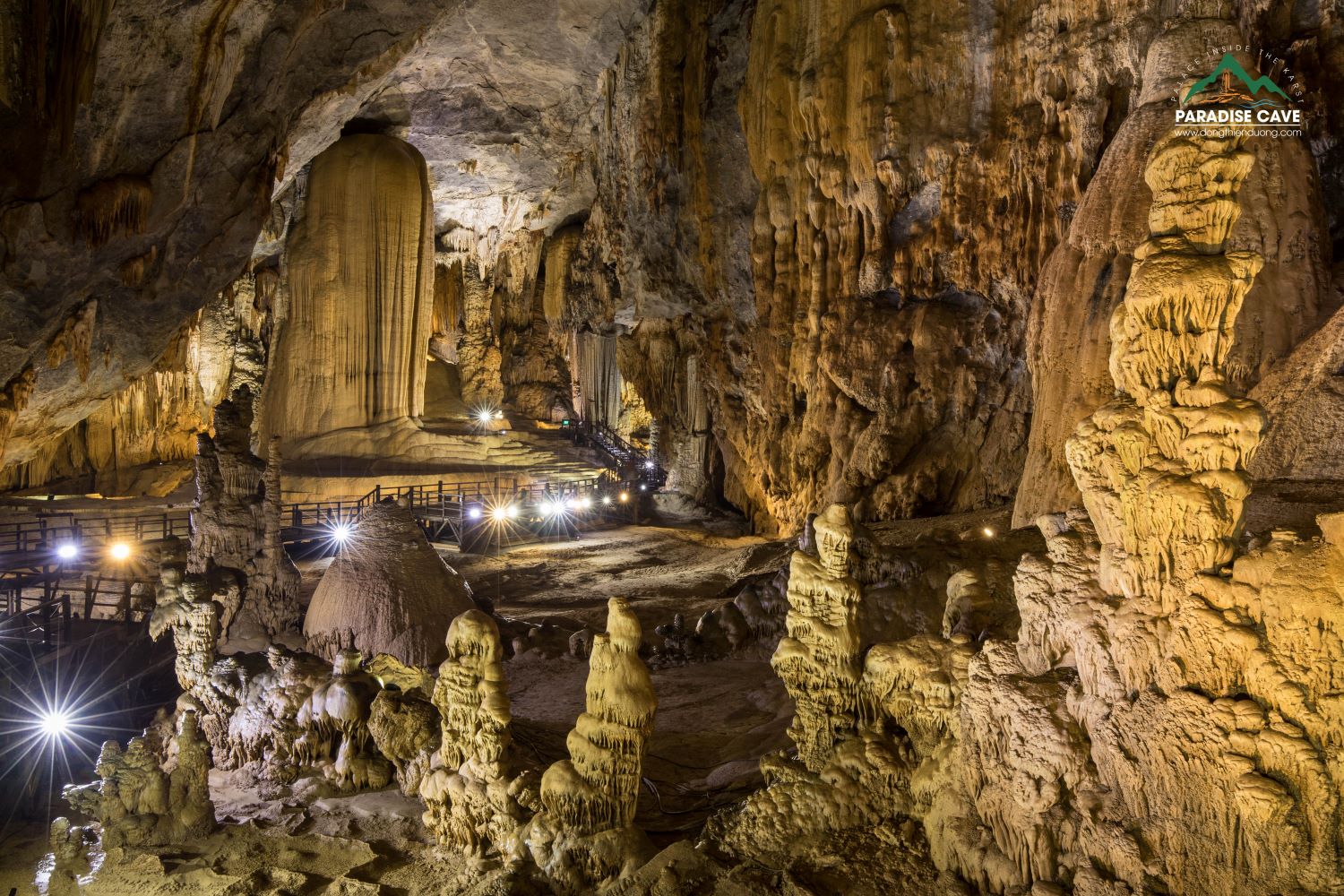Vietnam’s nature is full of majestic beauty, captivating travelers from all over the world. Among these wonders, Son Doong Cave – the biggest natural cave in the world – stands out as one of Vietnam’s most famous natural marvels. Exploring Son Doong Cave is an unforgettable experience. Visitors will admire massive stalactites, giant stalagmites, and have the chance to swim inside the cave. The most thrilling part is conquering the impressive 90-meter Great Wall of Vietnam.
History of the discovery and exploration of Son Doong Cave
Son Doong Cave was discovered by a local man named Ho Khanh. He had lived a modest life by hunting animals and collecting wood in the forest. However, his income was low, and his living conditions were unstable. In 1990, while searching for agarwood in the forest, a sudden storm forced him to find shelter. It was then that he stumbled upon a cave entrance. As he approached, he saw thick fog pouring out of the cave’s mouth and heard the sound of rushing water from inside. However, he didn’t venture further and returned home. Later, he couldn’t remember the cave’s location.

It wasn’t until 2007 that the two leading members of the Vietnam-British Cave Exploration Team, Mr. Howard Limbert and Mrs. Deb Limbert, came to Phong Nha to survey the caves in the area. Mr. Limbert based his predictions about the possibility of a large cave behind Hang En on terrain analysis and the system of rivers and streams, but he could not find the cave entrance.
When speaking with Mr. Ho Khanh, Mr. Howard and Mrs. Deb were surprised to hear Mr. Khanh describe the features of a cave he had accidentally encountered in 1990. They persuaded him to recall the location and the way to the cave entrance. Mr. Khanh also made efforts to find the entrance after this conversation. However, in 2008, during another trip into the forest, Mr. Ho Khanh discovered the cave entrance. He memorized the path and used the positions of the mountains to mark the location before returning to contact the exploration team.
On April 7, 2009, together with the University of Science from Hanoi National University, Mr. Howard formed an exploration team to survey this cave. Mr. Ho Khanh also accompanied the team on this trip. Peter MacNab – a member of the team – was the first person to enter the cave. In the previous trips, without equipment and experts, Mr. Ho Khanh had never entered the cave. Therefore, this trip was also the first time Mr. Khanh entered the cave.
Mr. Ho Khanh and the team members named the cave Hang Son Doong. “Son” means mountain, and “Doong” is the name of a valley in Son Trach Commune, Bo Trach District, Quang Binh Province. The Rao Thuong stream flows through this valley, which the Bru Van Kieu people inhabit.

Process of measuring and surveying the cave
However, during this trip, the entire team was unable to continue their journey due to a large stone wall that blocked their path, as they did not have the necessary equipment. They were forced to turn back through the old route. The exploration team conducted measurements using laser devices.
In the following March, with better preparation and specialized equipment, the team, led by Mr. Howard, returned to overcome the wall. This wall was later named the Vietnam Wall. After overcoming the wall, the team moved another 600 meters to reach the cave entrance.
National Geographic TV also joined the expedition to film the exploration and measurement of the cave. The team determined the cave’s volume to be 38.5 million cubic meters. This figure was five times larger than the 9.5 million cubic meters of Deer Cave in Malaysia, which was considered the world’s largest cave at the time. As a result, Hang Son Doong appeared in the documentary “The World’s Biggest Cave” and was announced by National Geographic TV as the largest natural cave in the world. For more details about the discovery history of Hang Son Doong, visit: https://oxalisadventure.com/cave/son-doong-cave/
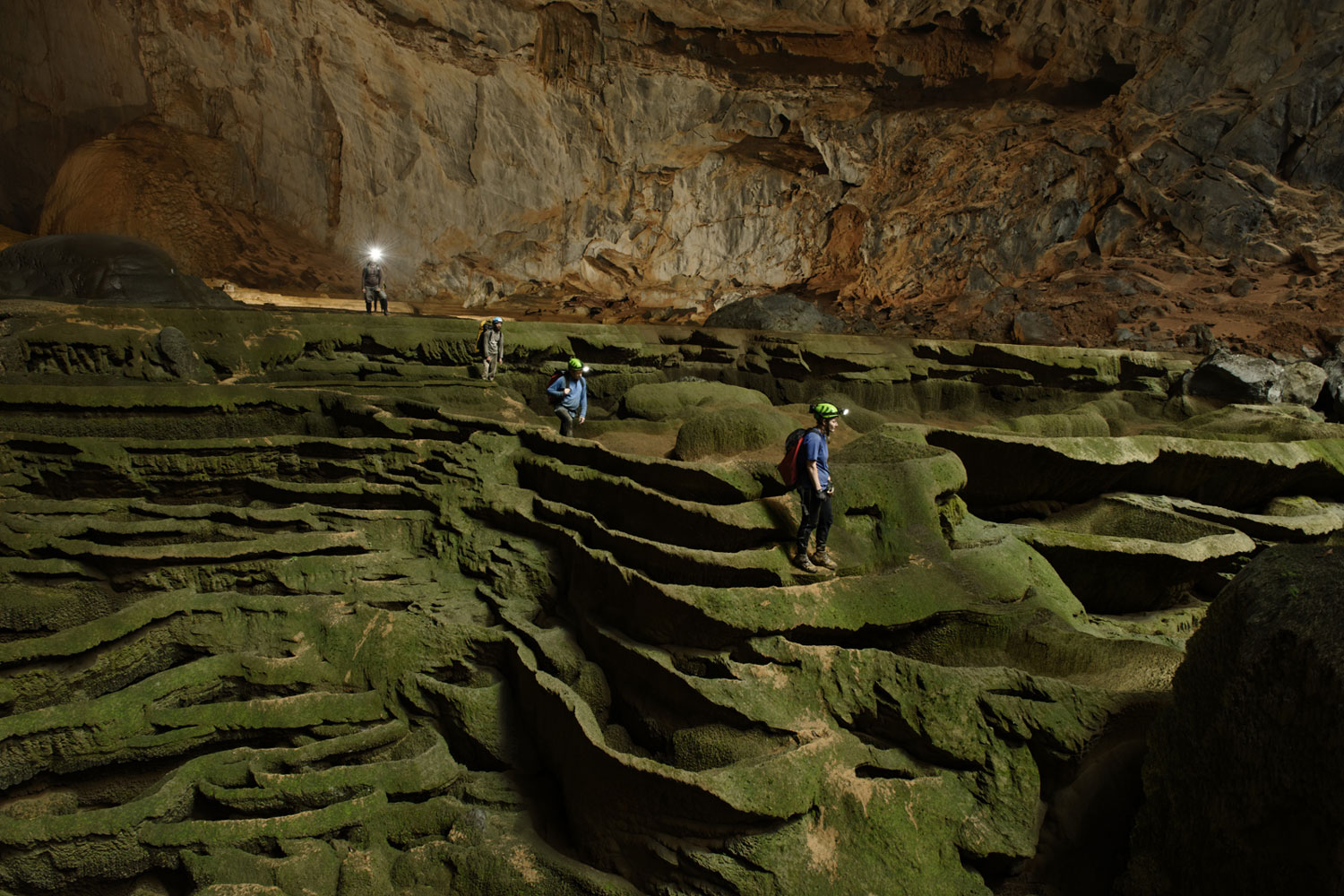
Not stopping there, Mr. Howard, along with a team of world-renowned diving experts, conducted an exploration of the underground river inside the cave on March 31, 2019. Experts believe that these rivers are likely connected to Hang Thung. After some time of surveying, at a depth of 90 meters, the team discovered an underground passage. However, the expedition had to stop due to the lack of diving equipment suitable for such a great depth. Experts suggest that if this section of the cave is connected to Hang Thung, Son Doong Cave’s volume could increase by an additional 1.6 million cubic meters. Future explorations may be planned to investigate further.
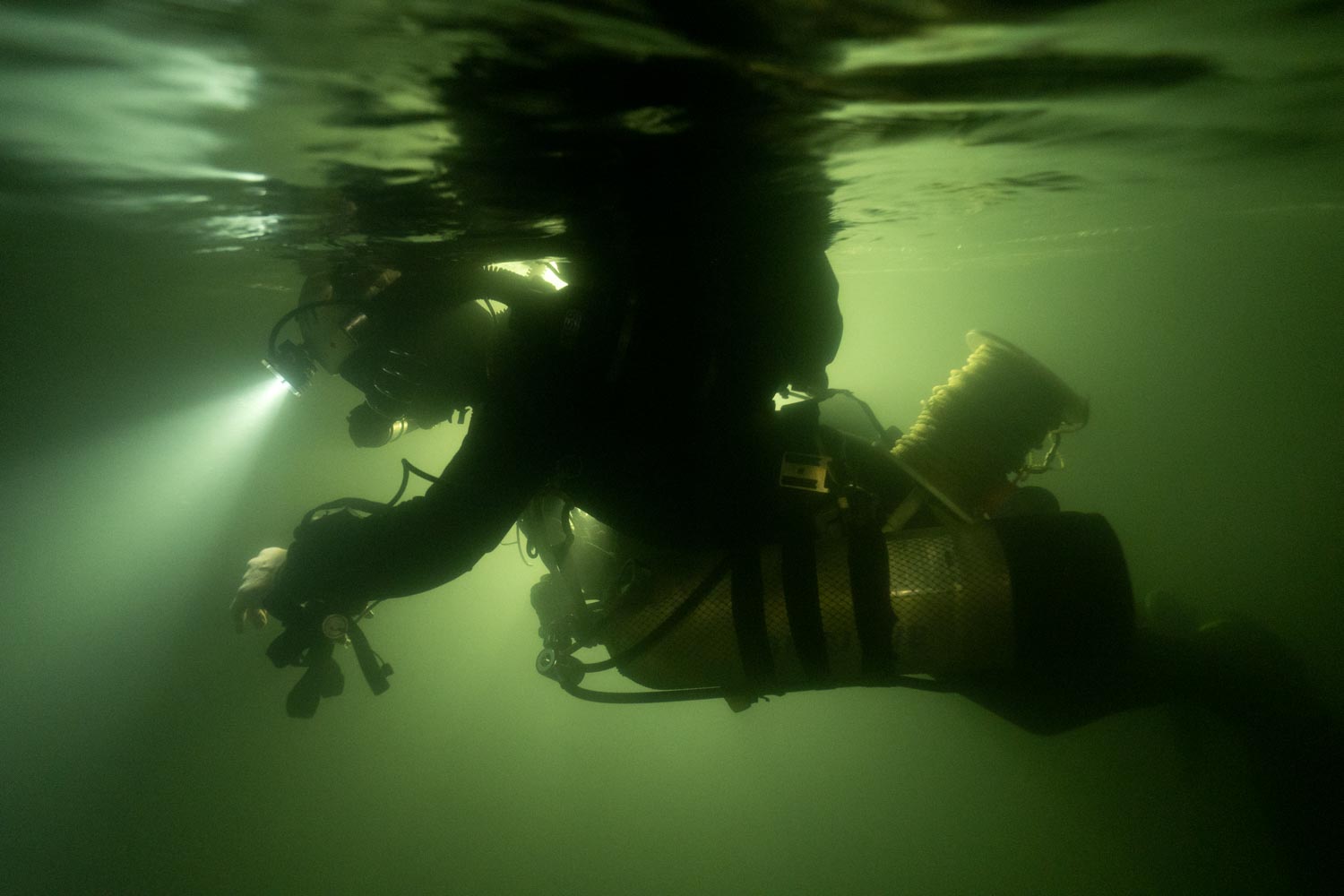
The unique features of Son Doong Cave
The enormous size of the cave
With a length of nearly 9 km and a volume of up to 38.5 million m³, Son Doong Cave is recognized as the largest natural cave in the world, five times the size of Deer Cave in Malaysia. Previously, this cave was recorded as the largest in the world, with a volume of 9.5 million m³. Inside the cave, there are vast spaces that could fit a 40-story building and accommodate a Boeing 747 airplane.
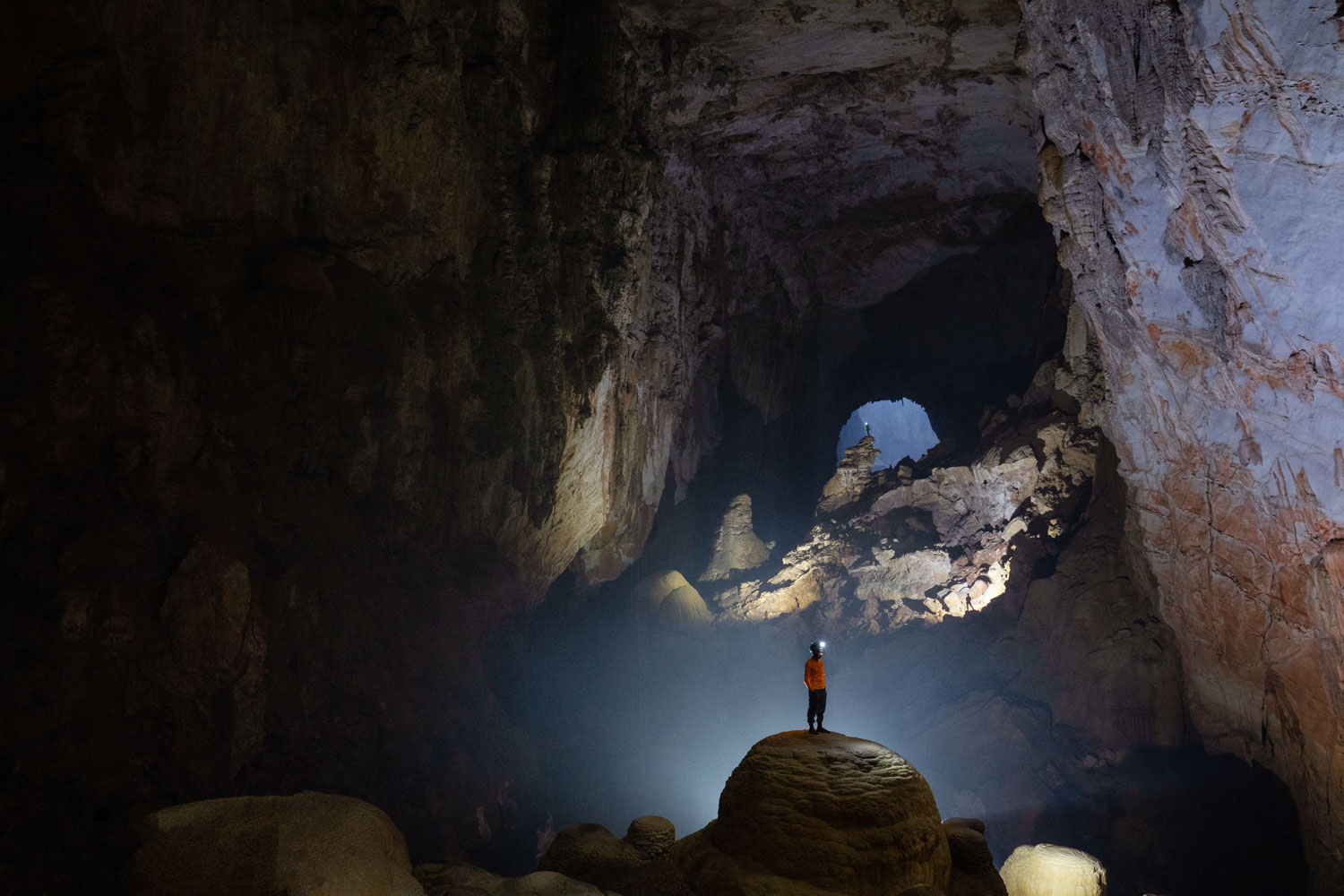
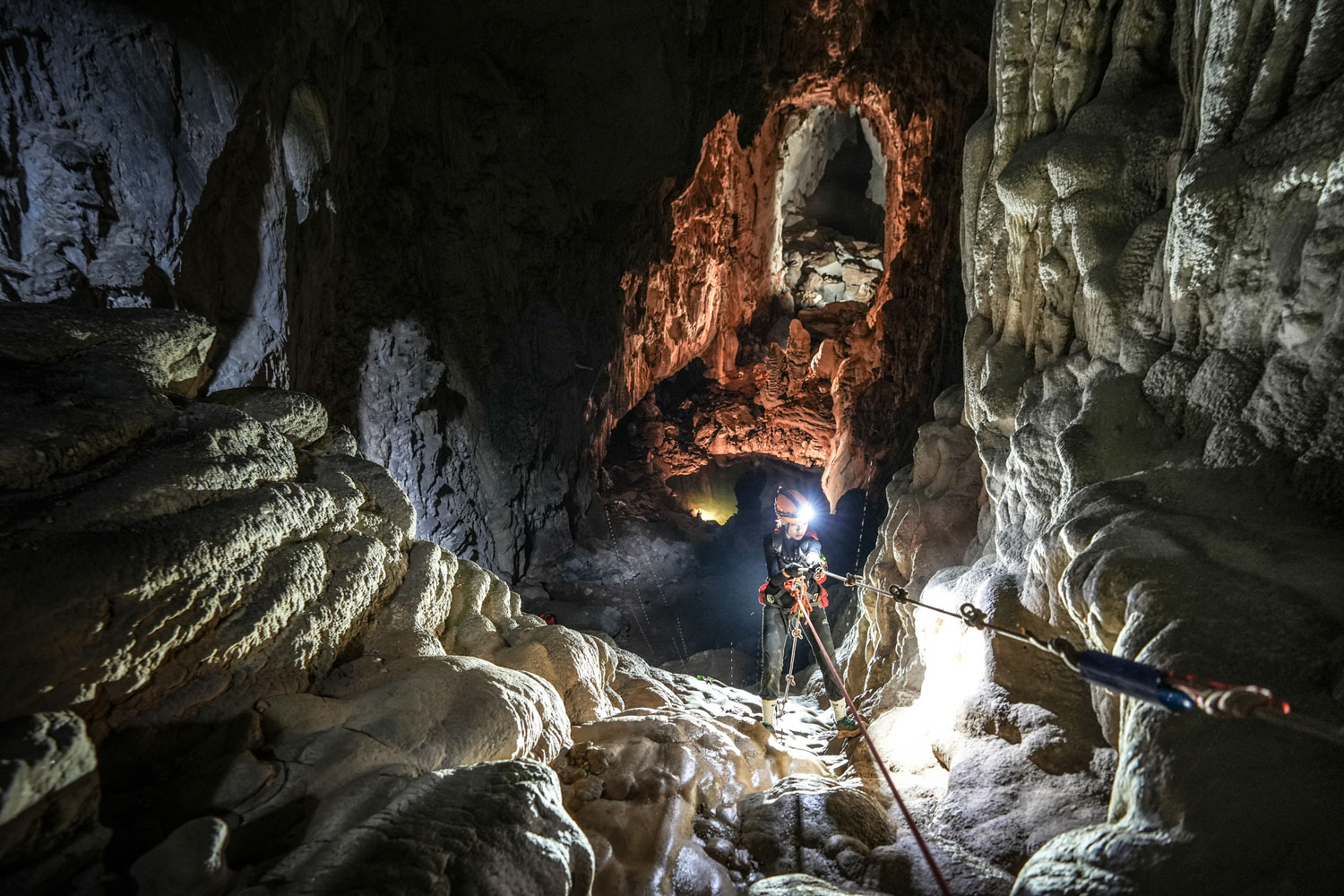
The unique system of stalactites and stalagmites
With its enormous volume, it’s no surprise that the cave also houses the world’s tallest stalagmite. The stalagmite, named Hope and Vision, was measured at over 80 meters tall during a 2009 survey of Hang Sơn Đoòng, making it 10 meters taller than the stalagmite in Zhi Jin Cave in China. This stalagmite has been recognized by Guinness as the tallest in the world, standing at 70 meters.
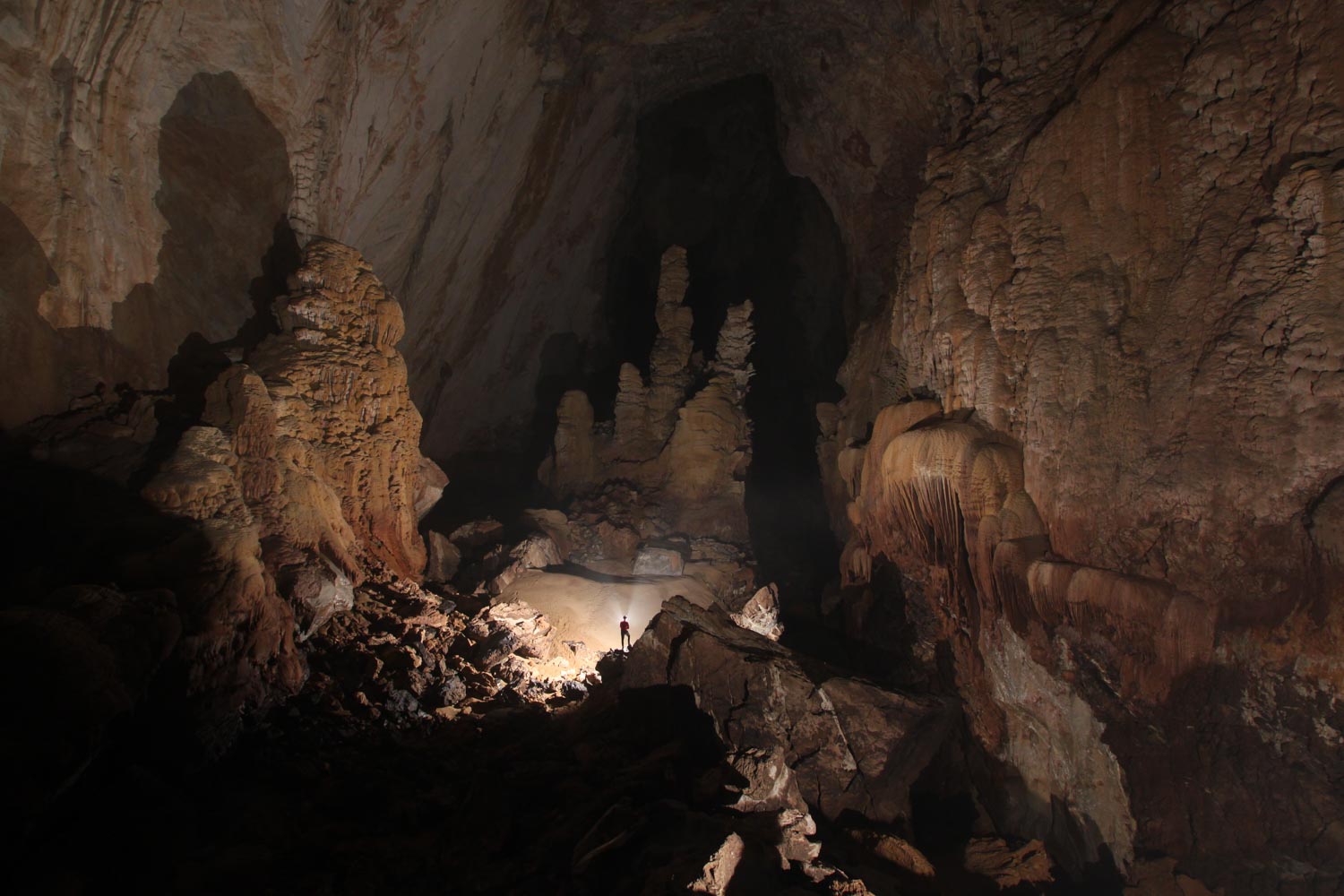
Cave pearls
Inside the cave, there are also unique cave pearls. These are calcium stones that come in various shapes and sizes, some as large as a baseball. The cave pearls located near flowing water tend to have smooth surfaces, while those in drier areas are rough and uneven. However, regardless of their location, they all look beautiful when illuminated by headlamp light. Since these are just ordinary calcium stones with no commercial value, visitors are not allowed to touch or take them. Moreover, exposure to sunlight will turn these cave pearls black, causing them to lose their natural beauty.
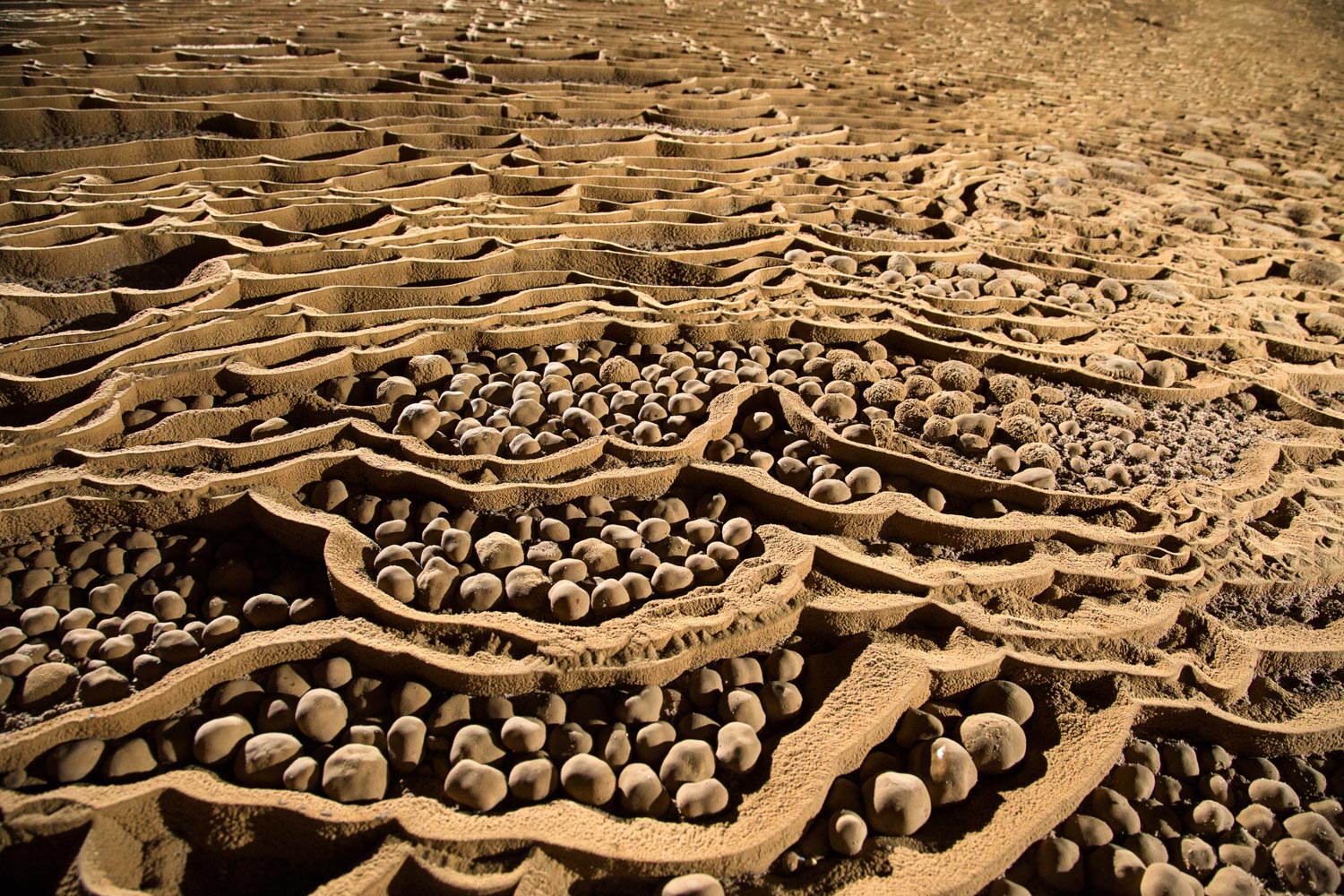
The world’s largest stalagmite – Hand of Dog
Located between Hope and Vision and Doline 1, the Hand of Dog stalagmite stands about 60 meters tall. This stalagmite was formed by a flow of calcium carbonate over a long period of time in an area of the cave with a vaulted ceiling nearly 100 meters high.
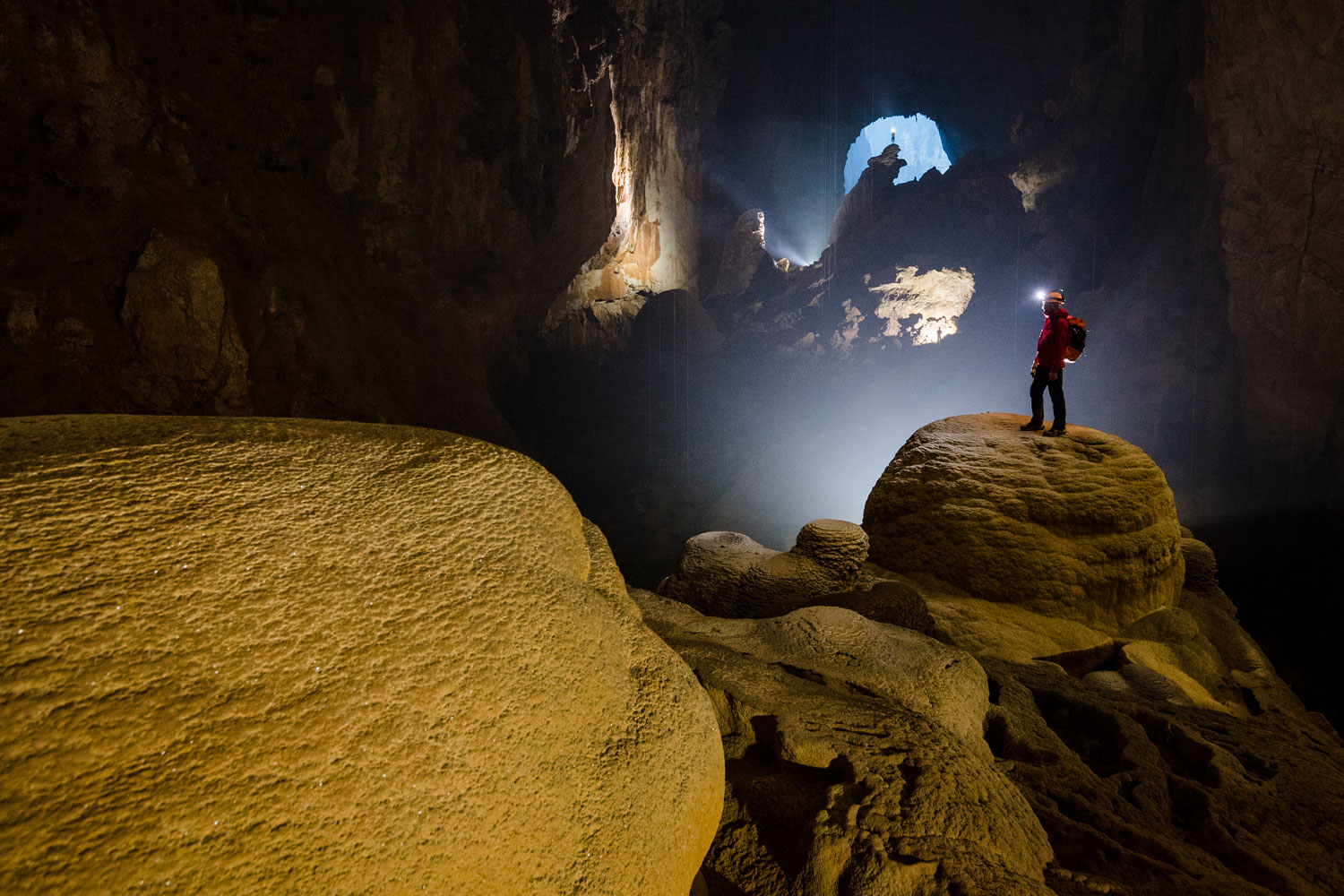
Great Wall of Vietnam
Known as a massive wall of calcium, crossing this wall requires specialized equipment and expert guidance to ensure safety. The wall stands 90 meters high, with 25 meters of vertical climb and 65 meters at a 45-degree slope. After successfully conquering the wall, the team will need to move approximately 500 meters to reach the cave’s entrance.
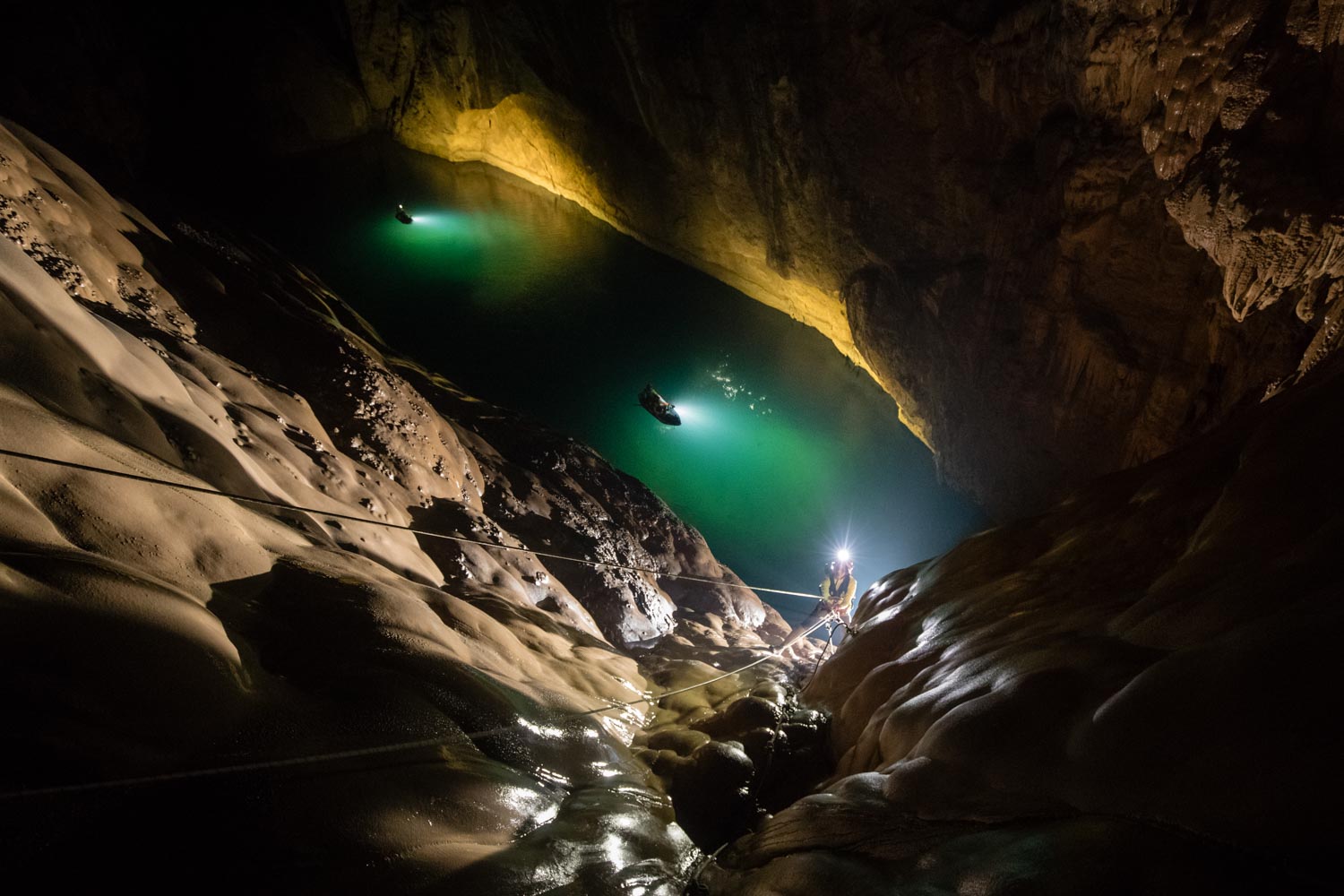
The primeval forest inside the cave
At Doline 2, there is a primeval forest located right inside the cave at a depth of about 200 meters. In 2009, during the exploration of Son Doong Cave, experts thought they had reached the cave entrance. However, after surveying, they quickly realized they were still inside the cave. Thanks to sunlight filtering through the sinkhole, creating favorable conditions for photosynthesis, a lush vegetation blanket has developed. Especially, ferns growing along the pathway make this place resemble the entrance to a fairy tale garden.
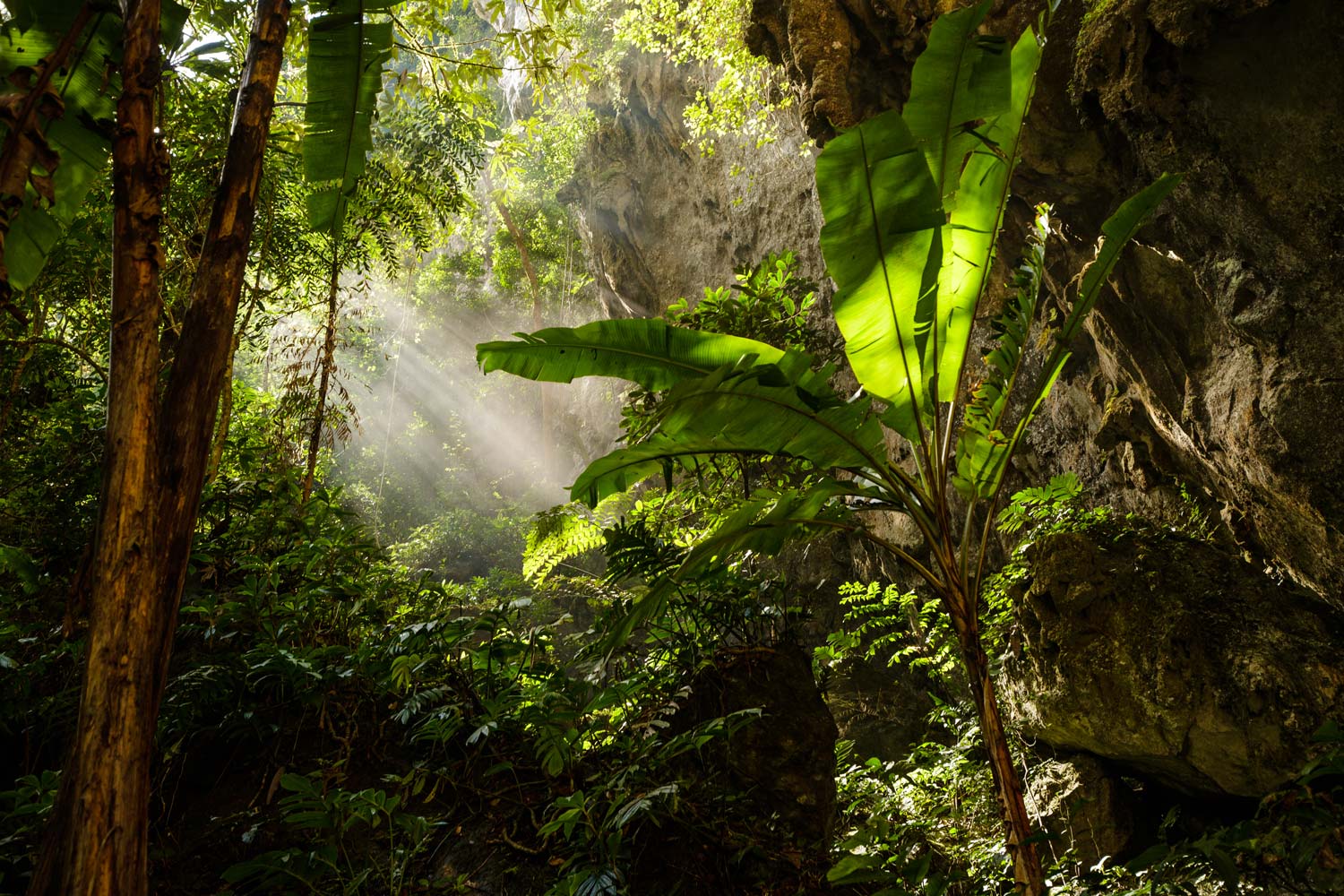
Fossil passage
This is a place where traces of shells, fish bones, and fossils from many years ago have been recorded. It was once a basin and part of the ocean, so through Earth’s natural changes, dead animals left behind bones, shells, and more, which eventually became sedimentary rock layers. If they were not compressed into rock, they would have been mineralized and turned into fossils. During the flow inside the cave, the underground rivers have eroded the rock layers, exposing these fossils along the pathways.

Life inside Son Doong Cave
With a closed ecosystem and all the favorable living conditions—climate, light, humidity, food sources, water—in Son Doong Cave, there is a diverse range of fauna and flora, including insects, birds, monkeys, and species of transparent fish and shrimp.
Animals in Son Doong Cave
In the absence of sunlight, the animals in Son Doong Cave have adapted to their environment. Their eyes have regressed, and their bodies have become transparent. Additionally, seven new species have been discovered in the cave, including fish, lice, millipedes, spiders, scorpions, and rock geckos. Near Doline 2, where the pristine forest is located, animals such as flying squirrels, snakes, and monkeys have also been observed. Furthermore, in June 2023, scientists announced the diversity of arthropods in the cave, with 80 species recorded. These species also show distinctive traits compared to those in other caves, such as lighter body colors and longer legs.
203 insect species have been documented, including 144 butterfly species, which has increased the butterfly diversity in Phong Nha – Ke Bang National Park to 271 species. Notable species in Son Doong Cave include camel crickets and various beetles. The cave is also home to the butterfly species called the “swallowtail,” a native species of Vietnam.


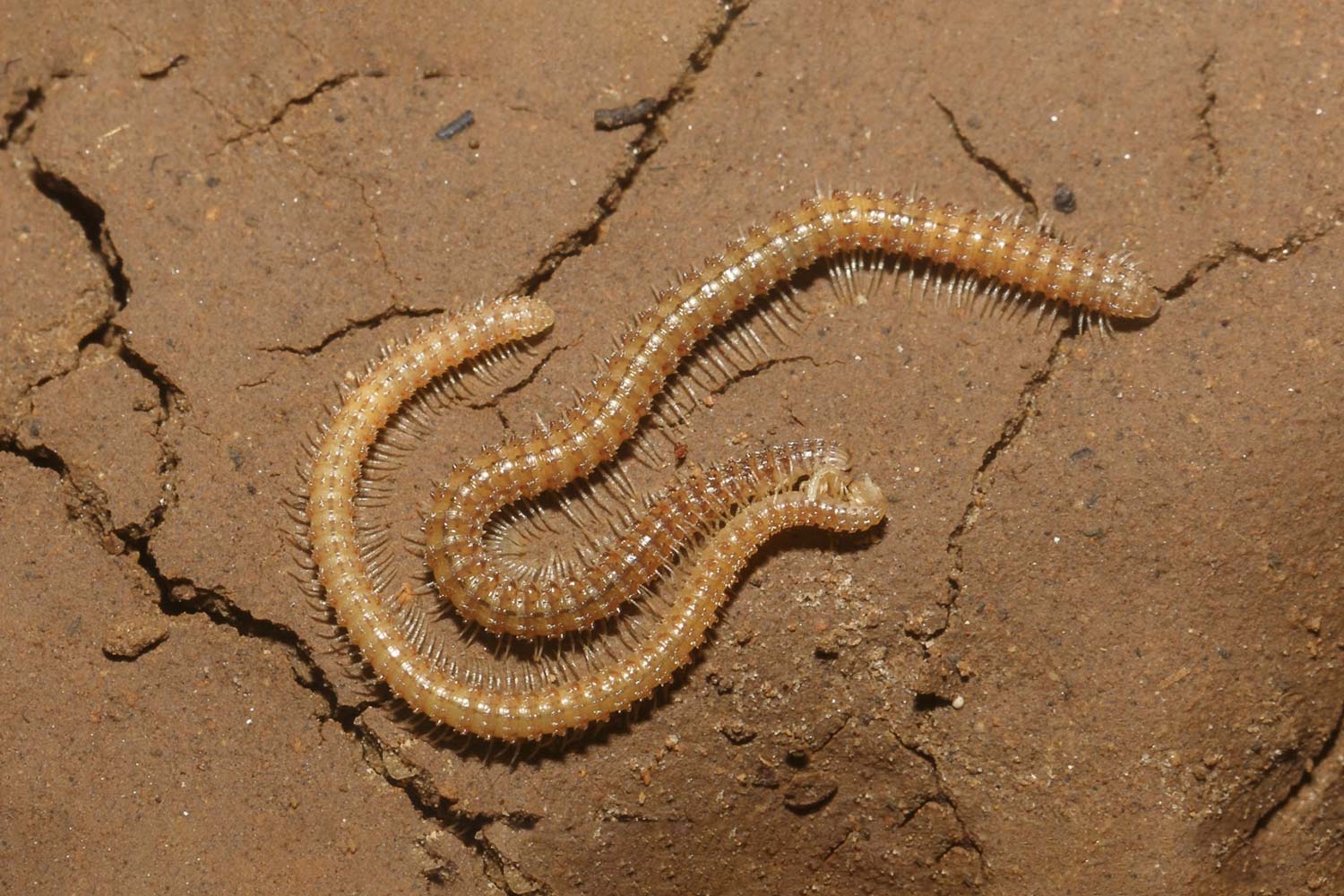
Plant species
Over 200 plant species have been recorded in Son Doong Cave. In the sinkholes where sunlight penetrates, although the openings are narrow and the amount of sunlight is limited, various herbaceous plants, epiphytes, mosses, and some vines thrive. Additionally, there are shrubs, mosses, algae, ferns, bamboo, wild pepper, climbing arums, and more. Doline 2 hosts a vast, pristine forest with many tall woody trees.
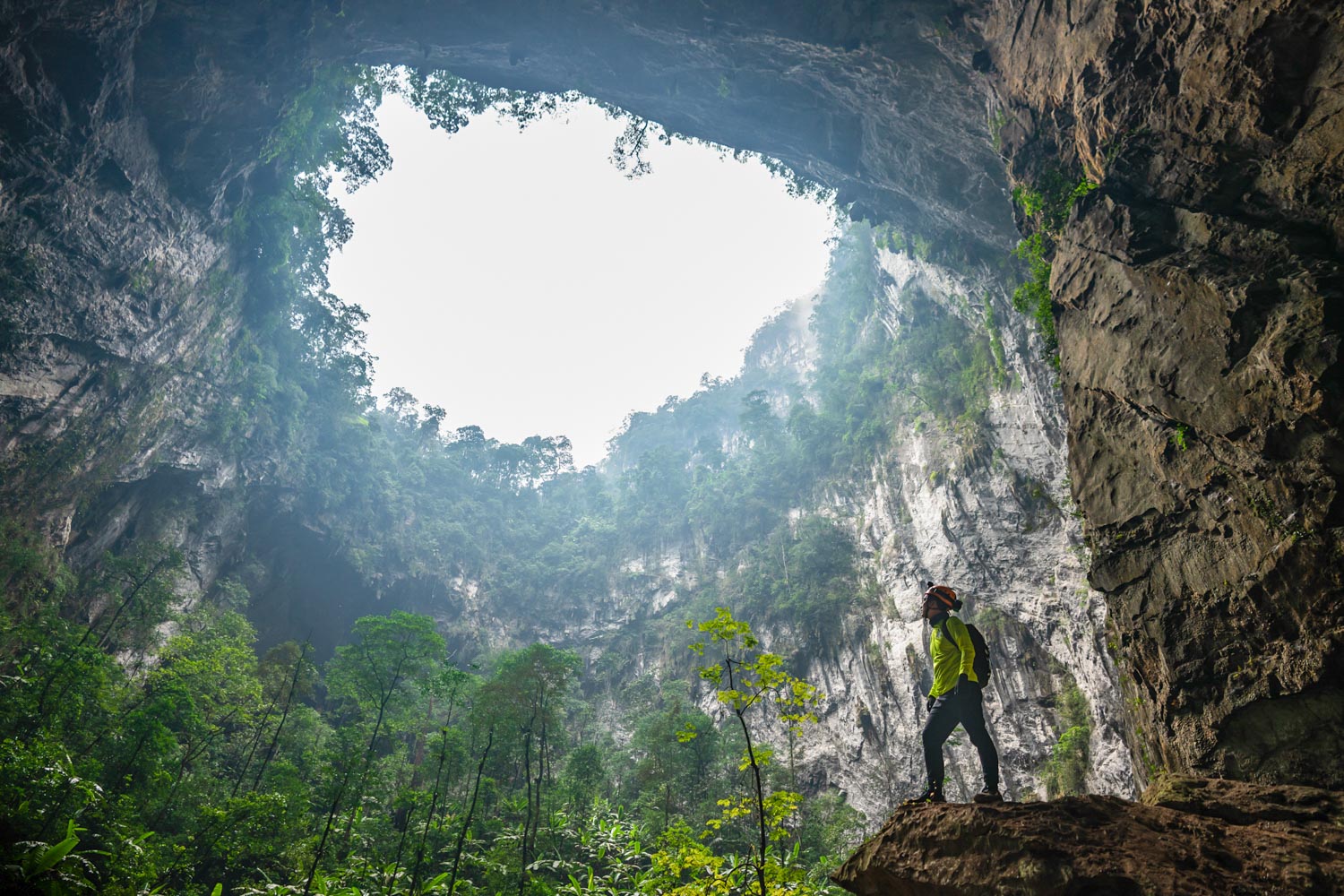
The Significance of Son Doong Cave
Scientific Value
Son Doong Cave is a unique geological phenomenon, formed millions of years ago through a combination of geological, climatic, and biological factors. The cave is enormous and holds the title of the largest natural cave in the world. Inside, there is a diverse and unique system of stalactites and stalagmites, some of which are massive in size.
Son Doong Cave is also a valuable scientific treasure, offering new insights into the processes of geological formation, climate, and biology. The cave serves as an ideal location for research into cave ecosystems, particularly the study of endemic species.
Tourism and Economic Value
Son Doong Cave is a valuable tourism resource that contributes to the socio-economic development of the local area. Since the Son Doong Cave Expedition tour was launched, it has created jobs for 125 local people during the 8-month tour season, with an average income of 8 to 12 million VND per month. Additionally, Son Doong Cave plays a key role in promoting Vietnam’s tourism image globally, attracting more international tourists to Quang Binh in particular and Vietnam in general.

World record and media attention
- In 2013, the Guinness World Records recognized Son Doong Cave as the largest natural cave in the world.\
- In 2015, Guinness World Records acknowledged Son Doong Cave as the largest natural cave in the world by volume (38.5 million m³).
- In 2014, The New York Times listed Son Doong Cave as one of the 52 most attractive travel destinations worldwide.
- In 2015, ABC News’ Good Morning America broadcasted live from Son Doong Cave.
- In the same year, 360-degree images of Son Doong Cave were captured with clear visuals and sounds from inside the cave.
- In 2019, Son Doong Cave was chosen as the location for the music video of “Alone Pt.II” by artist Alan Walker.
- In 2020, Business Insider honored Son Doong Cave as one of the 20 natural wonders that break natural records.
- In 2021, National Geographic published a 360-degree photo series of Son Doong Cave, creating an impressive virtual tour experience during the pandemic.
- In April 2022, Son Doong Cave was celebrated with a Google Doodle on Google search pages across 18 countries.
- Most recently, on November 26, 2023, Son Doong Cave appeared majestically in Episode 6 of Planet Earth III – Extreme.
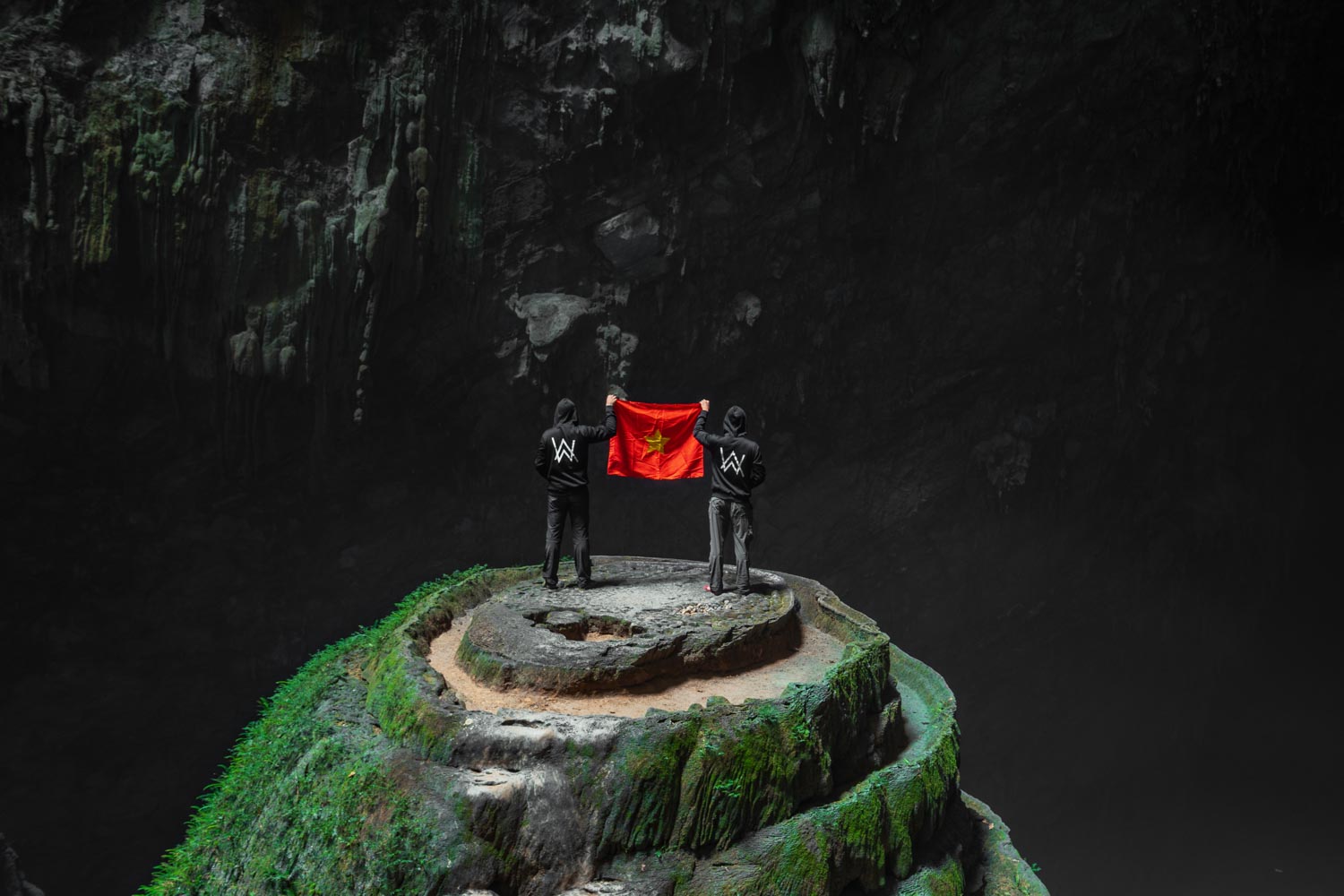
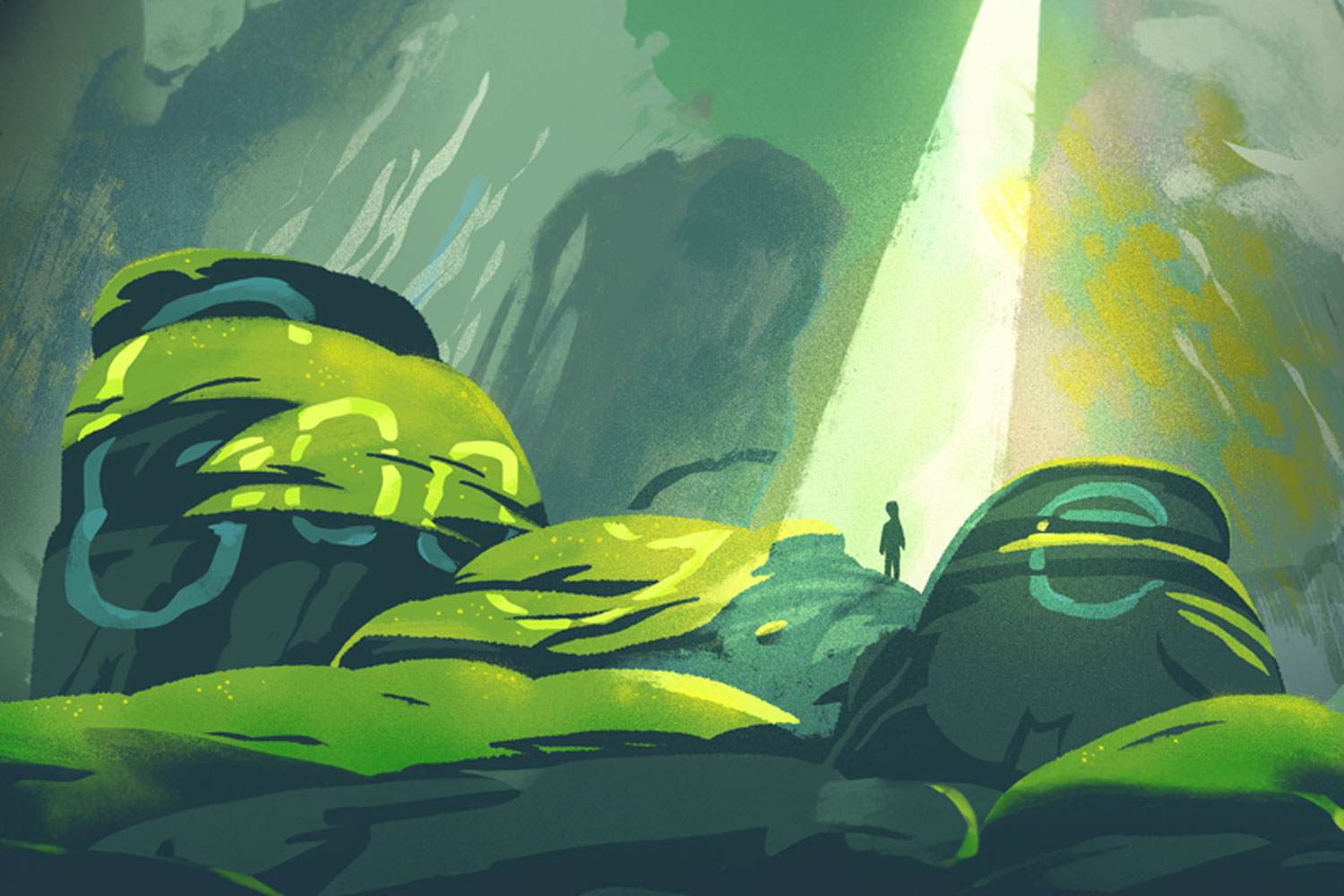

How to join Son Doong Expedition Tour
Oxalis Adventure is the only company authorized to operate the tour to explore Son Doong Cave. This is a high-difficulty adventure that requires physical strength, health, and experience, and is open to tourists aged 18 to 70. The cost of the Son Doong Cave Expedition is 75,000,000 VND (US$3,000) per guest, which includes VAT, entrance fees, and forest environmental service fees (US$600), as well as management and supervision fees for the national park (US$20).
If you would like to book a tour or need more information, please contact:
- Website: https://oxalisadventure.com/
- Email: [email protected]
- Hotline: +84-919900357
- Fanpage: https://www.facebook.com/OxalisAdventure
6-Day 5-Night Son Doong Expedition Tour Itinerary
Day 1: Safety Briefing – Phong Nha
Day 2: Ban Doong – Hang En Cave
Day 3: Son Doong Entrance – Campsite Doline 1
Day 4: Garden Of Edam – Campsite Doline 2
Day 5: The Great Wall Of Vietnam – Son Doong Exit – Chay Lap Farmstay
Day 6: Chay Lap Farmstay – Dong Hoi
Efforts to preserve Son Doong Cave
As the only company licensed to operate adventure tours to Son Doong Cave, Oxalis Adventure has made continuous efforts to implement solutions and comply with regulations to protect the environment and preserve the cave’s ecosystem, contributing to raising awareness about the importance of safeguarding natural resources:
- Tours are operated from January to August annually to allow time for the cave’s ecosystem to “self-recover.”
- Only 1,000 visitors are allowed per year to ensure safety and minimize the impact on the cave.
- The trekking route strictly follows marked paths to avoid disturbing the cave floor.
- Bottled water is replaced with water filtration systems, and biodegradable bags made from corn starch are used.
- No infrastructure is built inside the cave; everything brought into the cave or forest is carried out.
- Oxalis Composting Toilets are used to avoid contaminating surrounding water sources.
Son Doong Cave is a stunning natural wonder and a source of pride for Vietnam. It is a masterpiece of nature and an invaluable gift to humanity. This cave is not only a popular tourist destination but also a precious natural resource that needs to be preserved and enhanced. To protect Son Doong Cave and promote sustainable tourism, cooperation among the government, local communities, and tourists is essential.




